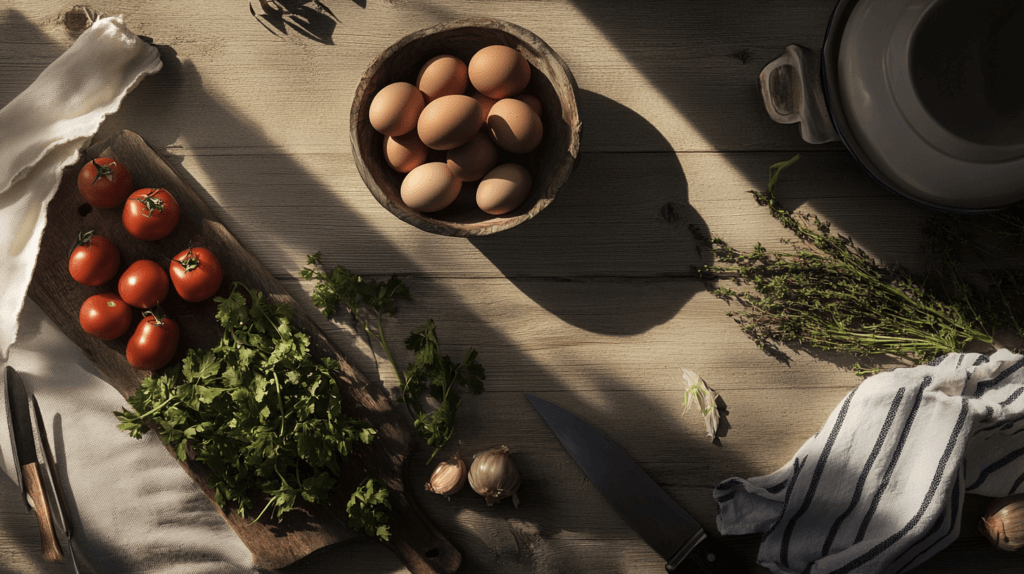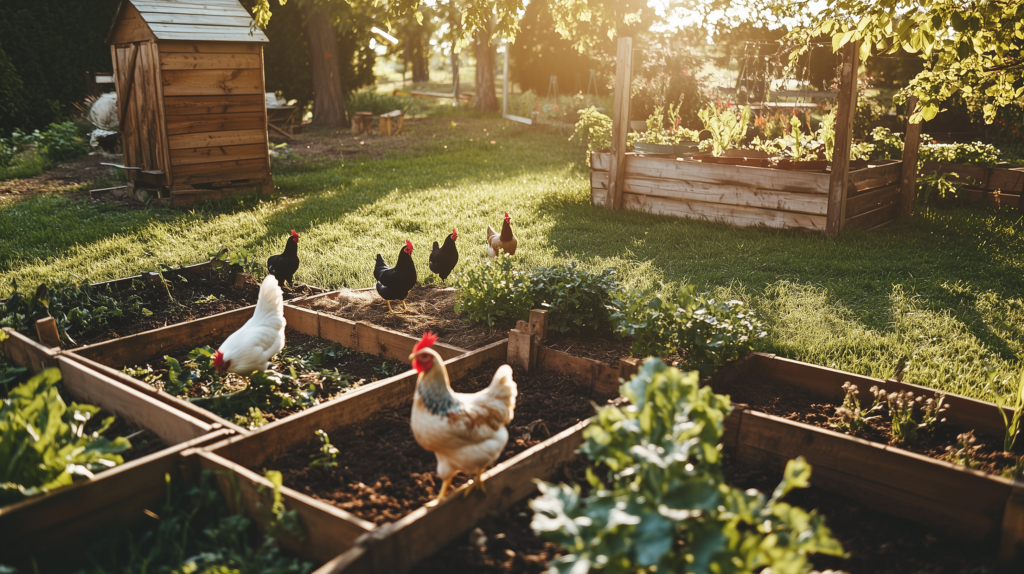This post may contain affiliate links, including those from Amazon Associates. If you make a purchase through these links, I may earn a commission at no additional cost to you. Learn more about our affiliate policy.
I’ve gradually stepped away from grocery store reliance over the years, choosing farmers’ markets and direct-to-door produce deliveries instead. We’re conditioned to believe grocery stores are the ultimate source of food, but they exist to serve big food corporations, not us.
Shopping today feels like a scavenger hunt – reading labels, scrutinizing ingredients, and searching for real, unprocessed food that hasn’t been stripped of its nutrients for the sake of mass production and long shelf life.
Over time, I realized I didn’t want my health or food choices dictated by a system designed for profit over well-being. So I started shifting my habits to sourcing food from local farms, making my own staples, and growing what I could. In this guide, I’ll share simple ways to build a more self-sufficient kitchen, from finding better food sources to replacing grocery store staples with homemade alternatives.
This guide is for anyone who wants to take back control of their food. I’ll walk you through simple ways to source better food, make key kitchen staples from scratch, and start breaking free from grocery store dependency one step at a time.
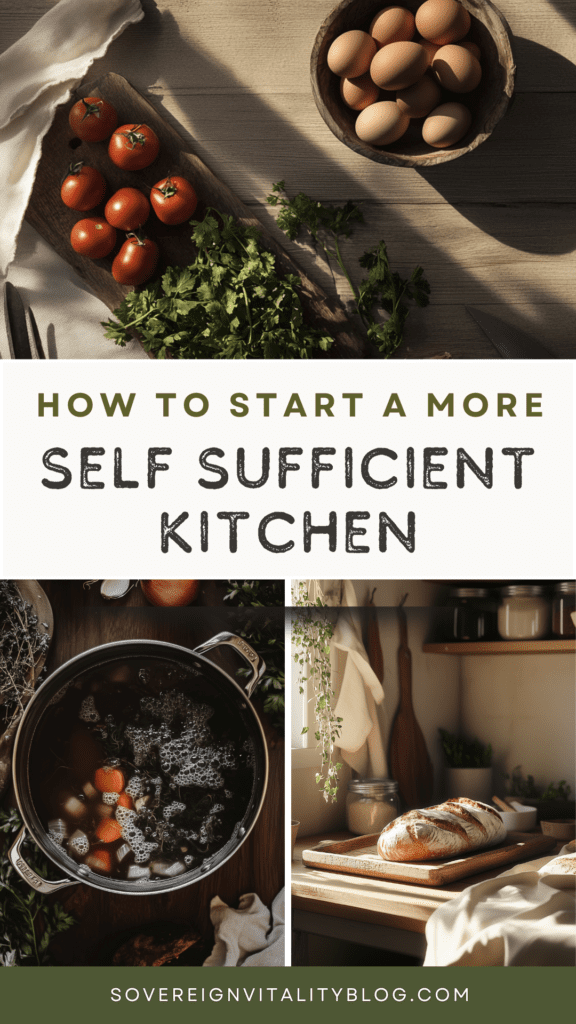
Why Reduce Grocery Store Reliance?
For most people, the grocery store is the default for food, but once I started questioning what was actually in my cart, I saw how flawed the system really is. Most packaged foods are filled with preservatives, additives, and seed oils to extend shelf life, not to nourish us. Even simple staples like bread, broth, and condiments are often ultra-processed, containing ingredients I’d never use in my own kitchen.
The fresh food section isn’t much better. Grocery store produce is usually picked before ripening, stored for weeks, and transported thousands of miles before it reaches the shelves.
The result? Bland, nutrient-depleted fruits and vegetables that can’t compare to locally grown alternatives. Meat and dairy follow the same pattern – industrial farming prioritizes efficiency over quality, leading to factory-farmed products that lack the nutrients and ethical sourcing many of us prefer.
On top of that, grocery prices continue to rise, making it harder to justify paying premium prices for food that isn’t truly fresh or high quality. I’m dedicated to shifting my habits to seek out local farms, making more of my own staples, and cutting back on store-bought processed foods.
Not only has it saved money in the long run, but it’s also given me more control over my food, making me less dependent on a system that doesn’t always have my best interests in mind.
Where to Source Food Locally
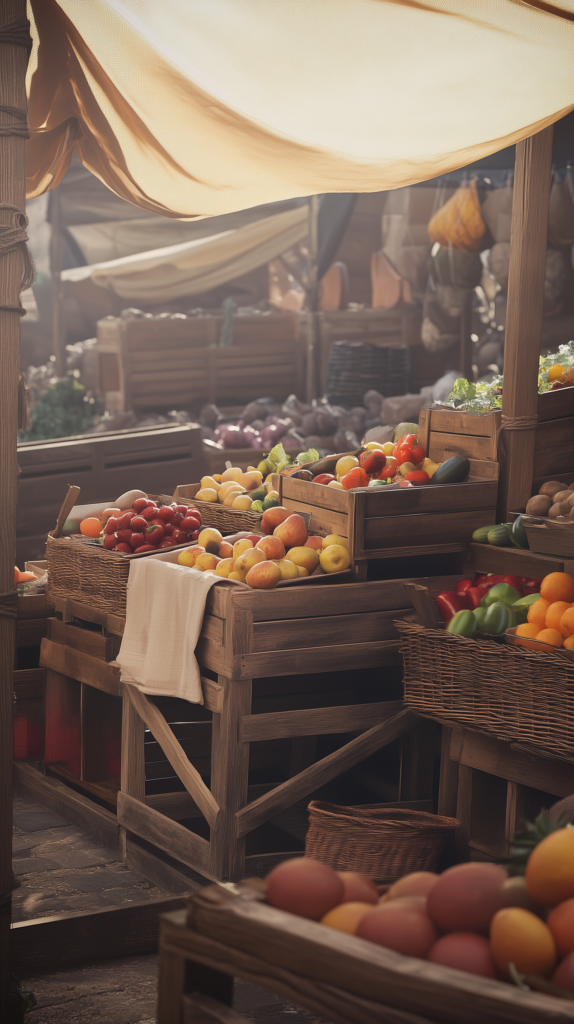
One of the biggest shifts in reducing grocery store reliance is finding alternative food sources. At first, it might seem inconvenient, but once I started shopping outside of big-box stores, I noticed a huge difference in quality and taste.
Farmers’ markets, small businesses, and direct farm deliveries offer fresher, more nutrient-dense food while supporting local economies.
Farmers Markets and CSA Programs
Farmers markets provide access to seasonal, locally grown produce picked at peak ripeness. Many vendors grow using organic methods, even if they aren’t certified.
- Fruits, vegetables, eggs, and dairy are fresher than grocery store options
- Many vendors sell grass-fed meats, raw honey, and homemade goods
- Buying direct from farmers ensures transparency about how food is grown
Community-Supported Agriculture (CSA) programs are another great option. By purchasing a weekly or biweekly farm share, you receive a rotating selection of in-season produce while supporting local farms.
Dairy and Meat Delivery or Direct Sourcing
Sourcing fresh dairy and pasture-raised meat outside of grocery stores is easier than ever, with many farms offering direct sales and home delivery. Buying in bulk or through a subscription ensures consistent quality and stable pricing, without relying on fluctuating grocery store costs.
Dairy options:
- Home delivery services for milk, butter, and cream
- Raw or low-temp pasteurized milk through herd shares
- Farm-fresh cheese, yogurt, and kefir from local co-ops or farmers markets
Meat options:
- Monthly subscription boxes like ButcherBox for grass-fed beef, pork, poultry, and seafood
- Bulk buying (half a cow, whole pig) directly from local ranchers or butchers
- CSA-style meat shares or farmers market vendors offering pastured, regenerative meat
Bakeries, Butchers, and Cheese Shops
Shopping at small, specialized food shops ensures higher-quality, artisan foods sourced from local producers. I’m lucky enough to have a bakery nearby that makes bread and pastries from locally sourced organically grown wheat!
- Bakeries using traditional sourdough fermentation for better digestibility
- Butchers offering pastured meats, custom cuts, and house-made sausages
- Cheese shops stocking raw and artisan cheeses from nearby dairies
These businesses are also great places to ask about local food sources you might not be aware of.
Seafood from Local Fishmongers
Buying seafood from a local fishmonger ensures fresher, more sustainable options than supermarket fish, which is often frozen and shipped long distances.
- Many sell directly from docks or small fisheries
- Some offer seafood CSAs or subscription-based fish shares
- Supports small-scale, sustainable fishing instead of industrial operations
Grow Your Own Food

One of the simplest ways to become less dependent on grocery stores is to grow some of your own food, even if you live in an apartment. I started small with a few potted herbs on my kitchen windowsill, and was surprised by how much of a difference it made. Fresh basil, rosemary, and mint were always within reach, and the flavor was worlds better than anything from a plastic container at the store.
Over time, I expanded to microgreens, sprouts, and a small container garden, finding that even a little homegrown food adds up.
Herbs and Microgreens
If you have a windowsill or a small counter space, you can grow herbs and microgreens year-round.
- Herbs like basil, thyme, and parsley thrive in pots and can be harvested as needed.
- Microgreens, such as pea shoots and radish greens, grow in trays and are ready to eat in about a week.
- Both require minimal space and can be grown indoors with natural light or a small grow lamp.
Sprouts and Indoor Gardening
Sprouts are one of the easiest and most nutrient-dense foods to grow. They don’t even need soil—just a jar, water, and a few minutes of attention each day.
- Alfalfa, broccoli, and radish sprouts are ready to eat in less than a week.
- Wheatgrass can be grown indoors for juicing or adding to smoothies.
- Sprouting is an easy way to add homegrown greens to your diet, even in the smallest spaces.
Find 7 creative indoor vertical herb garden ideas here.
Container or Balcony Gardening
If you have a little outdoor space, you can grow even more. With a few pots or planters, it’s possible to harvest fresh produce right from your own home.
- Leafy greens like lettuce and spinach grow well in small containers.
- Tomatoes and peppers thrive in pots and can produce a steady harvest.
- Compact fruiting plants like strawberries can even be grown in hanging baskets.
Learn how to start a renter-friendly container garden in any space here.
Keeping Chickens for Fresh Eggs

As grocery store egg prices continue to fluctuate, keeping backyard chickens has become an appealing option for those looking to secure a reliable source of fresh, high-quality eggs. I remember the first time I cracked open a farm-fresh egg after years of buying from the store – the deep orange yolk and rich flavor were unlike anything I had tasted before. Store-bought eggs, even the organic or free-range varieties, can’t compare to what comes from a truly well-raised hen.
Raising Chickens at Home
Backyard chickens are a long-term investment in self-sufficiency. With a small coop and a few hens, you can have a steady supply of fresh eggs while also benefiting from natural pest control and compost-enriching manure. Many cities allow backyard chickens, but it’s important to check local regulations, as some areas have restrictions on flock size or prohibit roosters.
For those with limited space, smaller chicken breeds like Silkies, Bantams, or Australorps are excellent options. They are quieter, adaptable to urban settings, and still produce a decent number of eggs. Setting up a backyard coop doesn’t have to be complicated, and once your flock is established, they require minimal daily maintenance. For a complete guide to getting started, check out my post on raising backyard chickens for beginners.
Where to Find Fresh Eggs Locally
If raising chickens isn’t an option, sourcing fresh eggs from local farmers is the next best thing. Many farmers markets have vendors selling pastured eggs, which are often much fresher and more nutrient-dense than store-bought alternatives. Some small farms even offer egg subscriptions, allowing you to pick up a weekly supply directly from the source.
Another great option is checking with neighbors who keep chickens. Many backyard chicken keepers end up with more eggs than they can use and are happy to sell or trade extras. Connecting with local farms or small producers not only ensures better quality eggs but also supports small-scale, ethical farming instead of factory-farmed alternatives.
Make Your Own Kitchen Staples

One of the best ways to cut back on grocery store reliance is by making more of your everyday staples at home. I used to think homemade broth, bread, and condiments were complicated. But I soon realized they’re often easier than expected and the quality is far better than anything I could buy. Not only do homemade staples taste better, but they also eliminate unnecessary additives, preservatives, and seed oils that are common in store-bought versions.
Vegetable Broth
Instead of buying cartons of broth, I now freeze vegetable scraps and make my own.
- Save things like broccoli stalks, kale stems, carrot peels, celery ends, and herb stems in a freezer bag.
- Once you have enough, simmer them in a large pot of water with salt and seasonings for an hour.
- Strain and store in the fridge for a week or freeze in jars or ice cube trays for later use.
Homemade broth adds so much depth to soups and sauces, and it’s practically free since it uses scraps that would otherwise go to waste. I use mine to replace water when making rice or pasta, so the minerals from the broth are cooked in to give these carbs more nutrients.
Sourdough Bread and Pastries
Baking bread from scratch used to seem intimidating, but once I started making sourdough, I never went back.
- Mix flour and water to create a sourdough starter—feed it daily for about a week until it becomes active.
- Use the starter to bake homemade loaves, rolls, pizza crust, and even pastries.
- No commercial yeast needed, just natural fermentation for better digestion and flavor.
Here is a beginner friendly guide on making sourdough bread in small kitchens.
Mayonnaise, Mustard, and Condiments
Once I realized most store-bought condiments were full of seed oils and preservatives, I started making my own.
- Mayonnaise: Blend egg yolk, lemon juice, mustard, and avocado or olive oil.
- Mustard: Mix mustard seeds, vinegar, and spices, then let it ferment for better flavor.
- Ketchup: A simple blend of tomatoes, vinegar, honey, and spices avoids high-fructose corn syrup.
These take just minutes to make and last in the fridge for weeks, making them an easy swap for store-bought versions.
Yogurt, Kefir, and Ferments
Fermented foods are some of the best additions to a self-sufficient kitchen, and they’re surprisingly easy to make at home.
- Yogurt: Heat milk, stir in a spoonful of store-bought yogurt, and let it culture overnight.
- Kefir: Add kefir grains to milk and let them ferment for 24 hours—strain and repeat.
- Sauerkraut and kimchi: Mix shredded cabbage with salt, pack it into a jar, and let it ferment for a few weeks.
Making your own staples doesn’t mean doing everything at once—start with one or two, and you’ll quickly see how simple and rewarding it can be. These small shifts reduce dependency on grocery stores while giving you fresher, healthier versions of foods you already love.
Shifting Your Shopping & Eating Habits
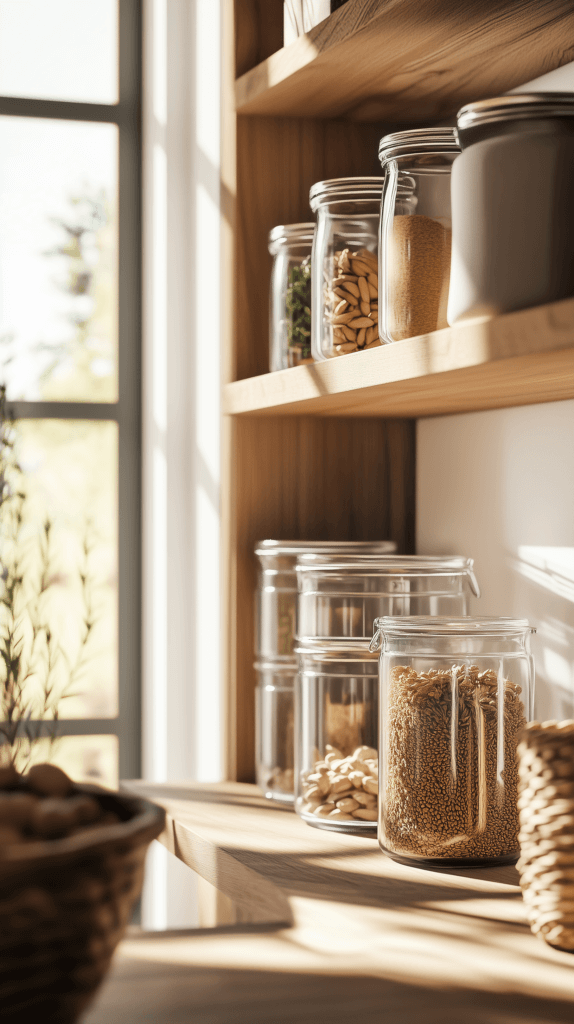
Reducing grocery store reliance isn’t just about where you shop, it’s also about how you think about food. I used to plan meals based on what was available at the grocery store, grabbing whatever was convenient. But once I started sourcing food locally and making more staples at home, I realized I needed to approach food differently.
Shifting to seasonal eating, bulk sourcing, and homemade alternatives has made me more intentional with my choices while improving the quality of what I eat.
Plan Meals Around Seasonal, Local Food
Instead of relying on grocery store stock, I now plan meals based on what’s in season and available from local farms.
- Farmers’ markets and CSA boxes provide fresh, in-season produce that’s often more nutrient-dense than store-bought alternatives.
- Seasonal eating naturally creates variety in your meals throughout the year.
- Learning to cook with what’s available helps reduce reliance on imported, out-of-season foods.
Find Bulk Food Sources
Buying in bulk has been one of the biggest shifts in my kitchen. It saves money, reduces packaging waste, and ensures I always have essentials on hand.
- Grain mills and co-ops offer large quantities of flour, oats, and dried beans.
- Local farms sell bulk meats like half a cow or a whole pig, which can be stored in a chest freezer.
- Buying nuts, seeds, and spices in bulk from specialty stores or online sources reduces costs compared to grocery store packaging.
Transition Away From Packaged Food
One of the biggest mindset shifts for me was realizing how many foods I could make from scratch instead of buying pre-packaged versions.
- Start small by replacing one store-bought staple at a time with a homemade version.
- Swap packaged snacks for homemade granola, sourdough crackers, or roasted nuts.
- Replace canned or boxed items like broth, condiments, or yogurt with simple homemade versions.
This shift doesn’t have to happen overnight. I started by swapping just a few grocery store items at a time, and now I hardly rely on pre-packaged foods at all.
Conclusion
Moving away from grocery store dependence doesn’t happen overnight. It’s a gradual shift—one that happens through small, intentional choices. When I first started, I didn’t overhaul my entire kitchen at once. I began by finding a local farmers market, swapping store-bought broth for homemade, and experimenting with growing a few herbs. Over time, those little changes added up, and now I rely far less on grocery stores than I ever thought possible.
The key is to start somewhere. Maybe that means buying eggs from a local farm, trying a CSA box, or making your own bread for the first time. Every step toward sourcing food more intentionally brings you closer to a kitchen filled with fresher, higher-quality ingredients—and more control over where your food comes from. The more you shift away from grocery store reliance, the more connected you become to your food, your community, and a more self-sufficient way of living.

